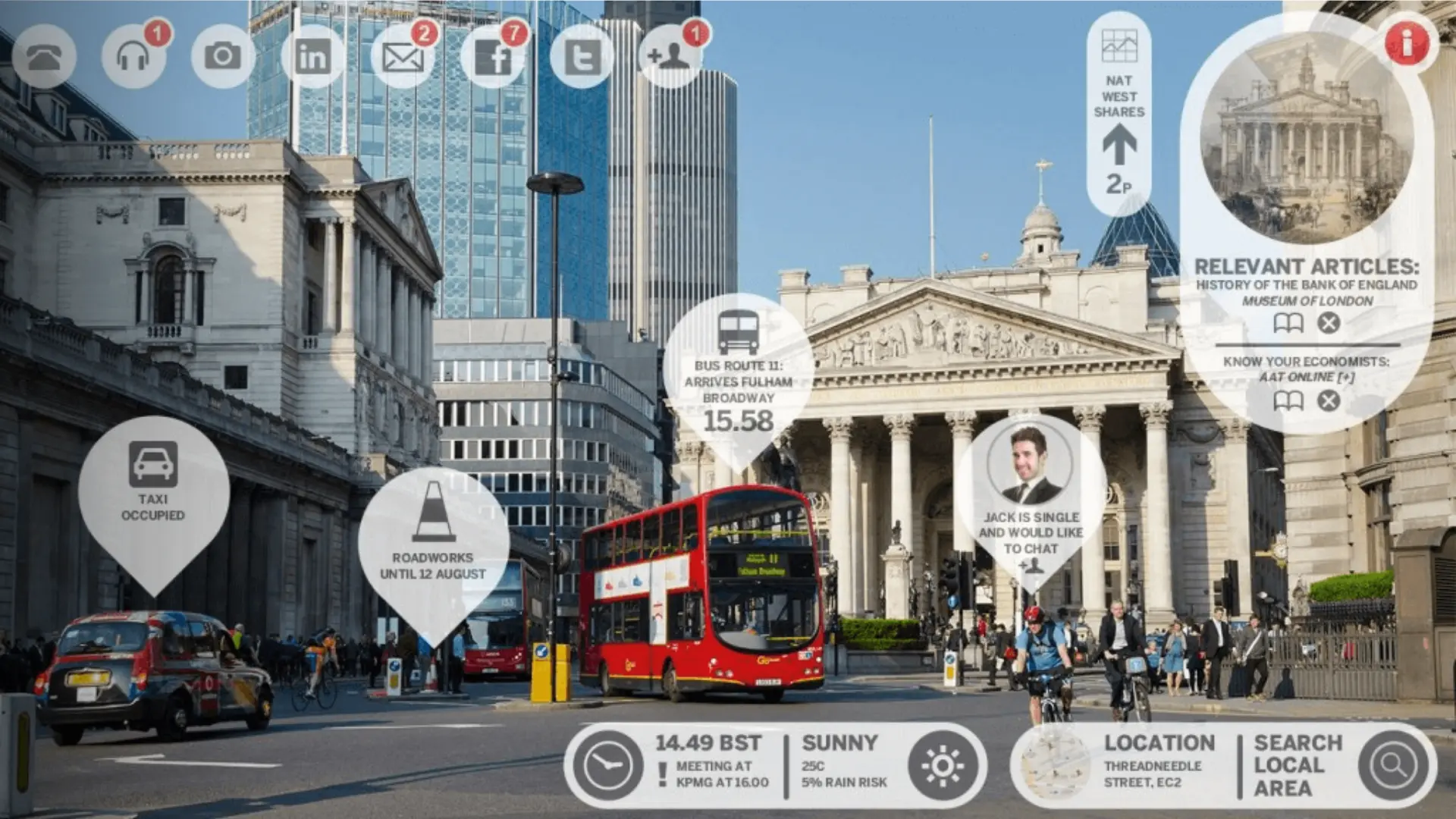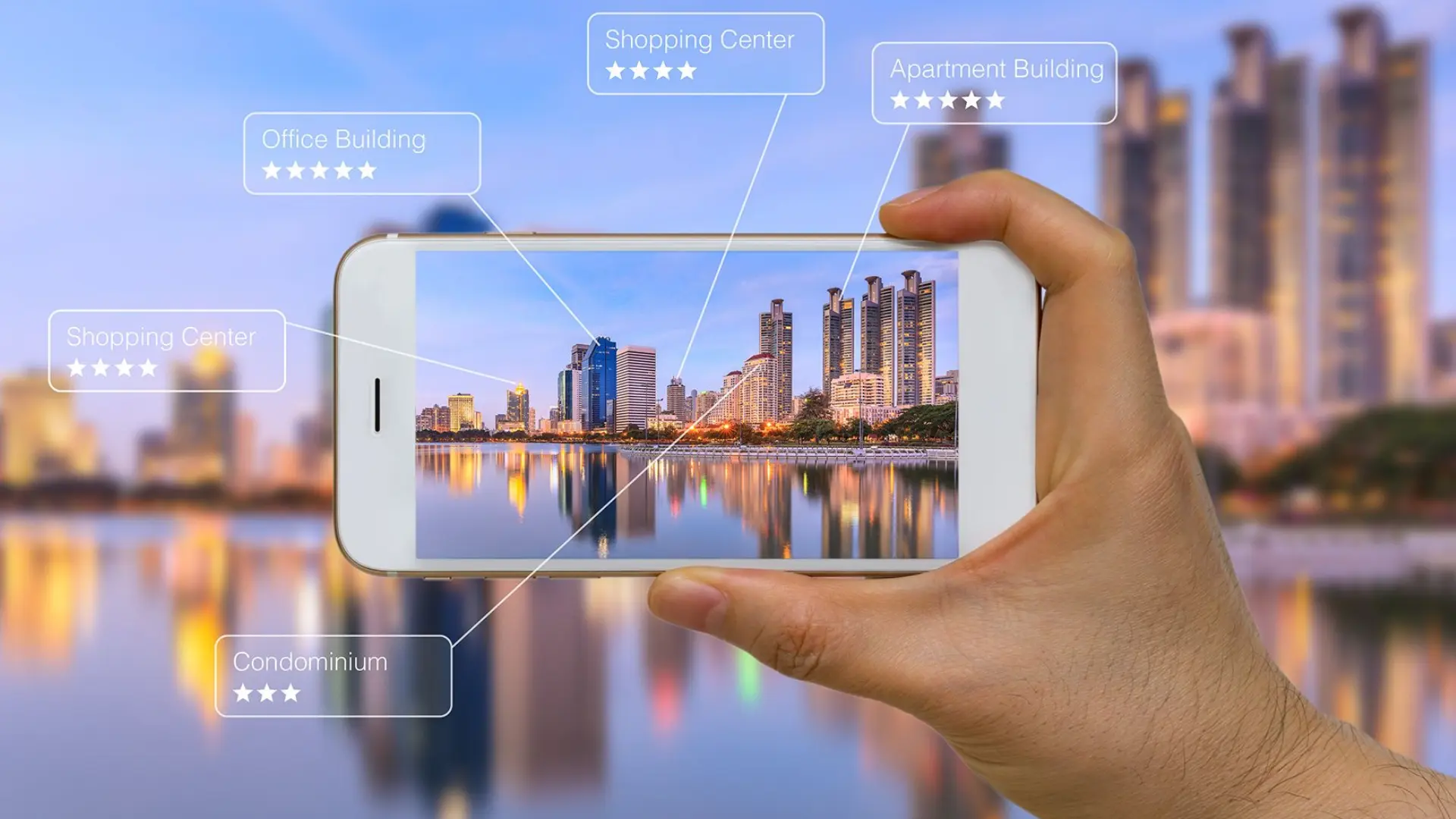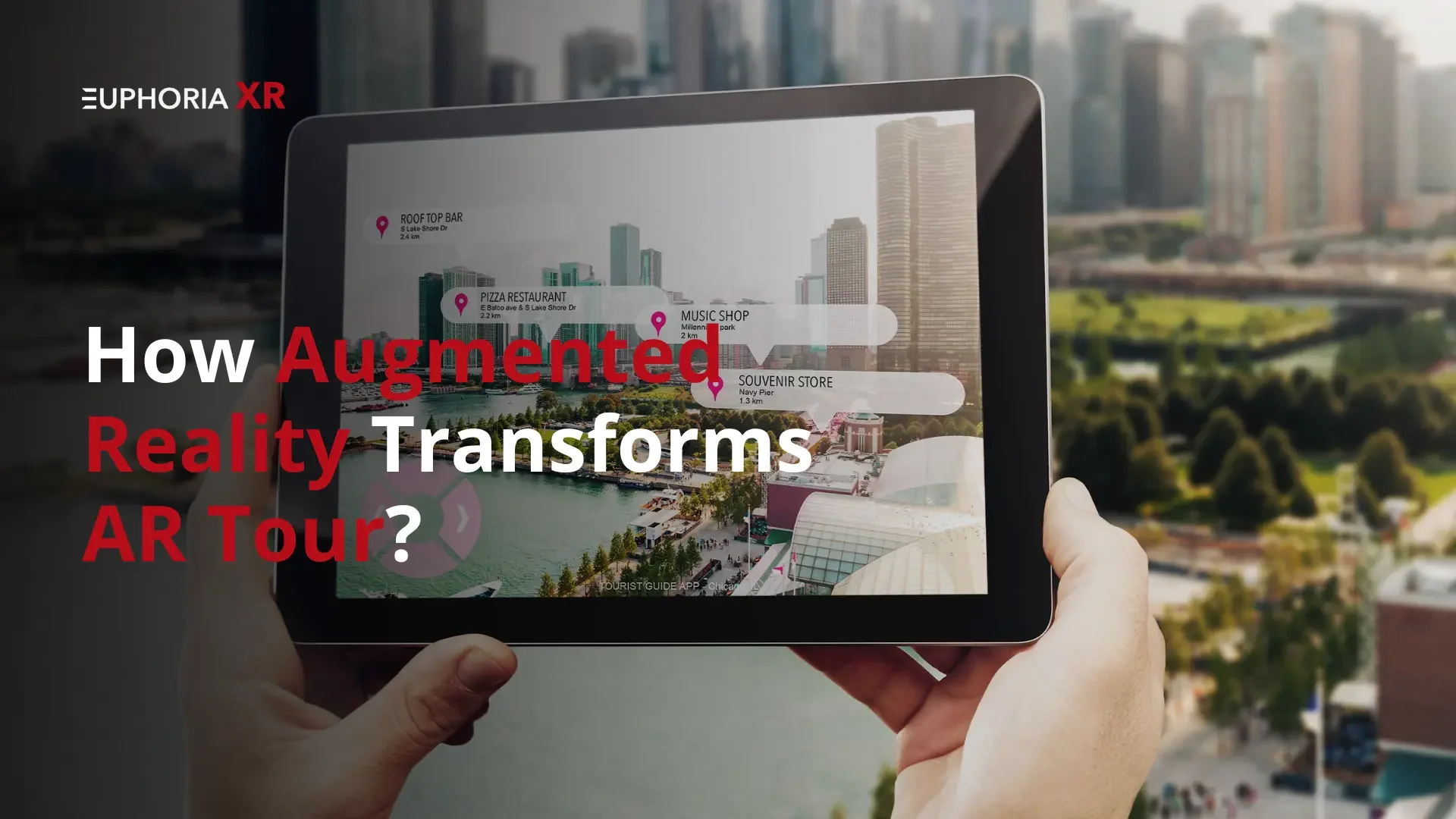Have you ever experienced feelings of soaring or watched a tour become dull, even with your passion to acquire new information?
It is not just you.
You go to an ancient settlement or a renowned museum, which is accompanied by desires and questions. All of this is soon replaced, however, with a few minutes viewing a wall of text reading paper on a faded plaque, or with a guide rattling off a memorized script, with only a brief pause to take a breath. The magic? Gone. The energy? Flat. You are left so confused, wondering what you are looking at, and why it is important.
It is not your fault. Old-fashioned tours are out of date.
Although we can now watch a whole documentary online, visit Mars in VR, or even have real-time translations just by pressing a button, why can the tours be any different?
Augmented Reality (AR) comes in here.
You are not told about history, but you can observe history through your eyes. It is just like being in front of the battlefield and seeing animated soldiers running into the field. Or holding your phone up to an old statue and hearing the forgotten tale of that statue whispered in your ear, in your language, at your speed, and in your manner of taking in.
AR in Tourism is also leading to a paradigm shift in how people experience places, such that sightseeing becomes more of an adventure rather than a lecture. It could be a city walking tour, a national park, an art gallery, the point is that it puts the context to the forefront by changing the experience of visiting a place to an active exploration.
We shall take you through the following in this post:
The actual meaning of AR in tour
How progressive tour operators and institutions are using it
The actual gains on the part of visitors and business enterprises
Problems and good practices
And how will touring be in the augmented world?
You want to be a curious traveler, a tech-savvy tour operator, a cultural site director interested in activities to motivate visitors more? Or are you a person just interested in learning about the Dark Side of the sequel universe? This guide will prove that AR in tour is not a futuristic concept any longer… it is already here.
Without further ado, let us dive.
What is Augmented Reality (AR) in Tour?
The use of augmented reality technology to overlay some digital content (such as pictures, animations, data) on real-life locations in the context of a tour is known as AR in tour. Tourists no longer have to rely on descriptions of a place and words on the signs that can only be read, but can also watch virtual reconstructions or historical events, characters, or interact with objects using their smartphones or AR glasses.
To take an example, when traveling in a city, AR may allow you to:
Look how a castle used to look hundreds of years ago when ruined
See historic events occurring in the place where they took place
Click on the monuments to get a backstory about them in your native language
It makes any tour more graphic, interesting, and unforgettable.
The Rise of Smart Tourism and Digital Trends
The digital transformation of the tourism sector is being provided, and AR has a central part to play.
A 2022 Deloitte report explains that more than 73% of travelers now want to have customized, technology-enhanced experiences. Tourists desire to be self-guided, touchless, with a high level of immersion, as most people have smartphones in their pockets. This need has already given way to a trend known as smart tourism, where technology powerhouses such as AR, AI, IoT, and data analytics are utilized to enhance the way individuals tour destinations.
AR is making an essential component of cities, museums, and tour agencies, which intend to outshine and win the attention of contemporary tourists.
Related: https://euphoriaxr.com/augmented-reality-in-travel-tourism/
Key Applications of Augmented Reality (AR) in Tours
And it is now time to discover how AR is making tours smarter and more exciting.

Navigation and Wayfinding
Have you ever been lost and dazzled about which direction to take when going on foot? That is done away with by AR.
AR-based navigation guides visitors by providing real-time arrows and on-screen instructions superimposed on the street, and makes the transition between points of interest confident. No guessing, no pencil and paper maps. This proves to be particularly useful in big outdoor areas, historic towns, or nature trails.
Immersive Historical and Cultural Experiences
When you can witness history, this makes it far more powerful.
AR allows travelers to observe critical episodes of the past, ancient rituals, wars, or cultural performances re-enacted in 3D in front of their eyes. A visitor will not have to listen to the words that this temple is 900 years old, but can observe a holographic monk go through the temple the way it was many centuries ago. It makes fixed locations alive.
Museums and Art Tours
The museums go beyond the dull halls and into exhilarating experiences with AR.
Visitors, by pointing a phone at a painting, sculpture, or exhibit, will be able to:
Listen to artists discuss their art
Watch motion pictures of artworks
Read multilingual descriptions or listen to audio phone guides
This is particularly interesting to kids and young adults who have visual and more interactive learning.
Language & Communication Support
The local language is not the first one that everyone can speak, and this fact can complicate tours.
Among the potential benefits, the AR Augmented Reality can be applied to an instant translation of signs, placards, or even spoken guides into other languages. Travellers have an opportunity to see subtitles, translated menu, or receive audible instructions via the phone AR camera, and the experience becomes more open and democratic.
Personalized Tour Recommendations
The AR applications can learn your likes and dislikes as you search.
Suppose you are an architecture lover. The AR guide may suggest additional stops where there are Gothic cathedrals and contemporary architecture. Stay in one of the historical sites longer, and it may provide more content, trivia, or stories around. The more interactive you are, the smarter your tour.
Have you ever considered letting your city/museum speak? Collaborate with the best Augmented Reality Development Company and transform ordinary environments into memorable experiences.
Geolocated Routes and Smart Spaces
Think about going about a city and as you walk past a particular location, your phone glows with stories, pictures, or even animation at the very same place. That is the beauty of geolocated AR tours.
The AR apps can prompt content where you are through the assistance of GPS, Bluetooth beacons, or the recognition of an image. It is as though one demystifies the digital layers of a place in real-time, without clicking, scrolling, and requesting directions.
Cities such as San Francisco, Amsterdam, or Seoul have already provided smart tourism projects where location-aware AR experiences are used to direct tourists through historical and cultural sites and entertainment.
Real World example:
The AR city tour in Amsterdam allows you to experience centuries of city development since you can see how the neighborhoods used to look: way back when, at various periods in history, as you stand in them.
Such an experience transforms the mundane routes into so-called smart spaces in which each corner has a narrative, and each step is a place to communicate.
Benefits of AR in Tour for Tour Operators and Visitors
On the right side of the augmented reality, it is not only fun but also useful to all the parties involved.
For Visitors:
Participation increases: An individual has higher chances to listen, communicate, and recall what he or she is taught.
Self-guided direction: Visitors are able to experience their speed and explore more where they are more interested.
Multilingual compatibility: AR tours can support multiple languages, thus they are inclusive.
For Tour Operators and Cultural Sites:
Reduced staff requirement: Self-guided AR tours will not always require a lot of people or guides.
Those who appeal to younger generations, Gen Z and Millennials, are used to more tech-driven experiences, and AR is the best way to satisfy them.
Improved insights: Keep analytics of which exhibits, venues, or content receive the highest interactions and make future tours more effective.
Improving Customer Satisfaction with AR in Tour
I visited so many places; however, in some of them, the tours were boring, and it ruined the rest of the trip. The problem with that is addressed by the assistance of AR and switching the experience to:
Non-passive, interactive
Personalized to the visiting rate and liking
More accommodating to the physically challenged or linguistically challenged
Users control where to stand or what to look at as opposed to being guided by those in charge. They can zoom in, replay, or go forward. This agency gives the tour more agency and an impression that it is personalized and gratifying.
How AR in Tour Increases Revenue
Now, let us speak about the numbers, as AR is not just some cool functionality, but it is money as well.
Monetization of tour operators:
Freemium Models: Simplified tour charge-free, AR perceptions, or additional tales payment requirements
In-app Purchases: Add-on games, trivia, or special reconstructions
Branded Partnerships: Advertise local eating spots or stores with the help of an AR interface
Virtual Souvenirs: Allow the user to either store digital mementos or rewards for discounts after stopping by particular points
Increase in sales:
The engagement is reported to rise by 20 to 40 percent, and gift shop or cafe sales go up when AR is incorporated by many museums and tour businesses.
And then a case study:
The London National Gallery collaborated with Smartify, an AR-based app, and added a visible increase in visit time-on-site and follow-up donations.
When it comes to tours, AR is the best way to transform curiosity and convert it into connection and connection into conversions.
Improving Customer Satisfaction with AR in Tour
I visited so many places; however, in some of them, the tours were boring, and it ruined the rest of the trip. The problem with that is addressed by the assistance of AR and switching the experience to:
Non-passive, interactive
Personalized to the visiting rate and liking
More accommodating to the physically challenged or linguistically challenged
Users control where to stand or what to look at as opposed to being guided by those in charge. They can zoom in, replay, or go forward. This agency gives the tour more agency and an impression that it is personalized and gratifying.
How AR in Tour Increases Revenue
Now, let us speak about the numbers, as AR is not just some cool functionality, but it is money as well.
Monetization of tour operators:
Freemium Models: Simplified tour charge-free, AR perceptions, or additional tales payment requirements
In-app Purchases: Add-on games, trivia, or special reconstructions
Branded Partnerships: Advertise local eating spots or stores with the help of an AR interface
Virtual Souvenirs: Allow the user to either store digital mementos or rewards for discounts after stopping by particular points
Increase in sales:
The engagement is reported to rise by 20 to 40 percent, and gift shop or cafe sales go up when AR is incorporated by many museums and tour businesses.
And then a case study:
The London National Gallery collaborated with Smartify, an AR-based app, and added a visible increase in visit time-on-site and follow-up donations.
When it comes to tours, AR is the best way to transform curiosity and convert it into connection and connection into conversions.
Want to connect our AR Developer and make every type of solution and experience at any time and from any place.
Notable Case Studies in AR Tours
The prerequisite of AR in the tour experience can be revealed through real-life success stories. Let us examine some of the instances in which AR has been applied in the generation of interesting, innovative tours that appeal to contemporary audiences.
Google Maps AR Navigation
Then Google created Live View on its Google Maps, where users can track the AR arrows directly in the camera of their phones on the real streets. It has been highly beneficial to the tourists insofar as people have to walk around in mysterious cities and find their way quite efficiently, which has saved time as well as frustration, especially.
The Met AR Art Guide
In New York, the Metropolitan Museum of Art partnered with Microsoft to create AR experiences, allowing invisible information about artworks to be displayed. Side visitors were able to view 3D recreations, art commentary, and even time-lapse restorations using their smartphones. This changed the typical museum tour to a multi-interactive one.
Historic City Tours
Such cities as Vienna, Amsterdam, or Rome now introduce the AR-based walking tours during which users can observe how landmarks used to appear centuries ago. The apps involve geolocation and beacon technology to cause audiovisual reproductions of architecture, costumes, and daily living scenes.
Example: The Time Travel Vienna AR application helps you through the history, including Roman settlements, up to WW2, and the holograms and other virtual reconstructions displayed right at the location.
Museum-Based AR Guides
AR has been used by museums such as the National Museum of Singapore and the Art Gallery of Ontario, which gamify the experiences of the visitors, particularly younger audiences. These museums have reported heightened interest and longer periods of stay because of interactive storytelling, animated exhibits, scavenger hunts, and more.
Best Practices for Implementing AR in Tours
Successful AR tour construction is not all about the cool technology it involves; the idea is to produce a coherent and easy experience that your visitors will enjoy. The right way to do it is the following:
Target the Right Audience
Who is this tour aimed at? This is a question you should ask before setting up anything. Families having children? History lovers? International tourists? Art students? An understanding of your audience assists you in planning the correct type of content, storytelling style, and interface design.
Example:
In the case of kids, you may include the use of animated characters or gameified features.
Keep the content slower, use enlarged text, and simplified controls when dealing with older travelers.
Keep the Content Simple
The finest AR products can be followed without any fuss and attract attention at once.
Stick to:
Short descriptions
Clean visuals
Easy navigation
Never overwhelm the user through a long paragraph or too many items on the screen. Leave the reality of the real world to be visible.
Invest in Quality UX/UI
It should be a good experience, smooth, quick, and professional.
Ensure your AR app:
Loads quickly
Performs and stays well in portrait and landscape modes
Provides the possibility of making the offers accessible (e.g., subtitles, font size, voice-over)
Enables fitting on and off navigation
A poor design kills the engagement, even on good content.
Test Across Devices
It is recommended not to expect your application to work across all devices without any issues.
Your listeners may refer to:
Latest iPhones
The outdated Android products
Departure tablets or devices
Try it in various conditions (indoor/ outdoor / daylight/ low-light) and ensure it works in all conditions. Never leave the user of a non-AR compatible device without a fall-back or manually controllable alternative.
Have a bright idea for an interactive tour and do not know where to begin? Want only brilliant ideas and raw wisdom?
Getting Started with AR in Tour
How do you go about getting started with the best practices now that you know them? And here is a roadmap in a nutshell:
Evaluate Needs and Goals
Before constructing anything, ask this question:
What is your story?
Who do you consider your ideal visitor?
Do you want AR to substitute a guide, improve signage, or enrich entertainment?
This is economical and time-saving in the end.
Choose the Right Platform
You do not have to have a fancy app every time. Depending on what you want to do and how much you want to spend, you can use:
WebAR (no application is required)
AR AR with advanced features performed with the help of the app
Museum or art marker-based AR
AR Walking tours activated by GPS
There are advantages as well as disadvantages of every possible choice, and one should start small.
Build Strategic Partnerships
Do not do it yourself. Collaborate with:
Locally based tourism boards
Augmented reality developing companies
Historians or teachers
Stimulators or architects
This causes your material to be richer and your project more sustainable.
Measure Performance and ROI
Upon being alive, follow:
App downloads
Time on each stop
User reviews
Re-visits or referral
Make this information work to your advantage by enhancing the worth of your AR tour to sponsors or stakeholders.
Common Challenges in AR Tour Deployment
AR in the tour is exciting, but the world of the tour has some real-life problems that the tour operators must tackle.
Tech Infrastructure Limitations
Not everywhere is there good Wi-Fi or cellular data. Visitors can possess obsolete phones or a low battery.
Solution:
Provide support for offline or slimline downloads. Minimize the level of complexity in the AR experience.
Privacy & Data Usage
AR apps tend to use:
GPS
Camera access
Motion or microphone information
Always tell people what you collect and make sure you conform to data protection legislations such as GDPR.
Give people the option of opting in and letting them know how you protect their privacy.
Authenticity vs. Enhancement
Excessive amounts of virtual content may just take attention away from the real environment.
Moderation is the most important thing:
Thank God that AR is not meant to take over the real-world experience.
Hint: Employ light overlays and allow the users to control what they want to view.
Environmental & Social Considerations
AR spots, which are popular, will contribute to congestion, noise, or disturbance in quiet places.
Planners of tours are supposed to:
Community work
Establish limits and restrict access
Architecture, eco-friendly digital pathway
The notion of Smart AR is equal to that of Sustainable AR.
Future of AR in Tour Experiences

Hyper-Personalized Tours
The combination of AI will allow AR experiences to adjust on the fly depending on how people use them, what they like best, or what they are interested in.
Real-Time Interaction by 5G
More rapid mobile networks will enable high-quality and no lag AR displays, real-time translations, and instant data syncing.
Gamified and Social Exploration
AR tours in the future will be associated with scavenger hunts, game mini-games, and collaboration to be able to keep users engaged and entertained.
Remote / Hybrid AR tours
The locations will also be available virtually, and users can first preview or experience a location anywhere, with properties being opened up to AR-powered virtual tours.
Eco Smart AR Design
AR tours will also be more environmentally friendly, as it is going to involve the provision of the digital tour to avoid over-tourism around vulnerable sites
Guides in Emotional Intelligence
AR systems will read visitor mood or attention rate, and the storytelling or the pace will change to connect more deeply to the story.
You do not require a technological group to perform a splendid AR tour. Just the adequate mate. How about a chat and discussing what can be done with your space, your story, and your visitors?
Conclusion
The truth of the matter is that no one is excited by static signs, audio descriptions, and paper maps any longer.
The modern, dynamically developing world of experiences does not allow a business to operate without the use of AR in tourism. It transforms passive sightseeing into an interactive experience and a regular location into a place with a story that cannot be forgotten.
Are you a single tourist and want to explore a new city, do you need to address digital-first consumers as a museum curator, or are you a tour operator and want to remain on the edge? All this can be achieved through AR and open a new era of traveling.
And what is the best of all? You do not have to be a tech giant to start with.
All you require is simply a good story-and the appropriate tools to make it come to life.















